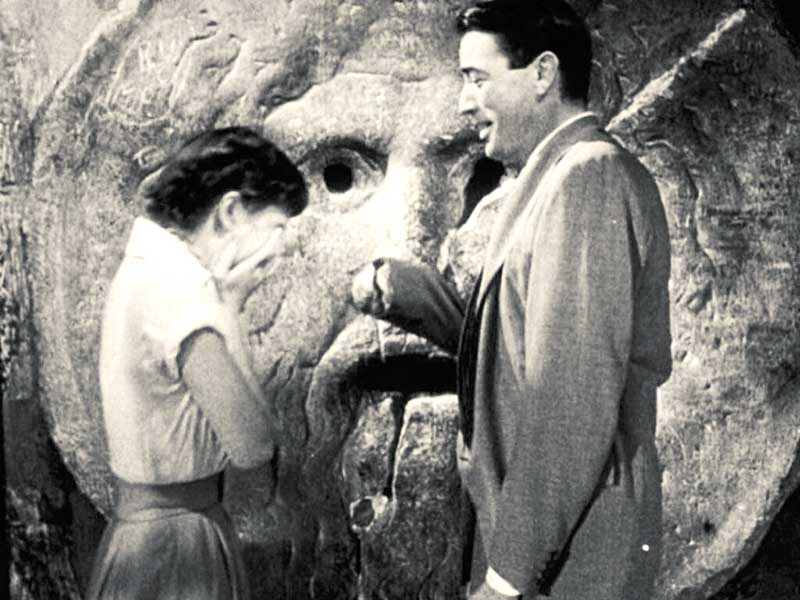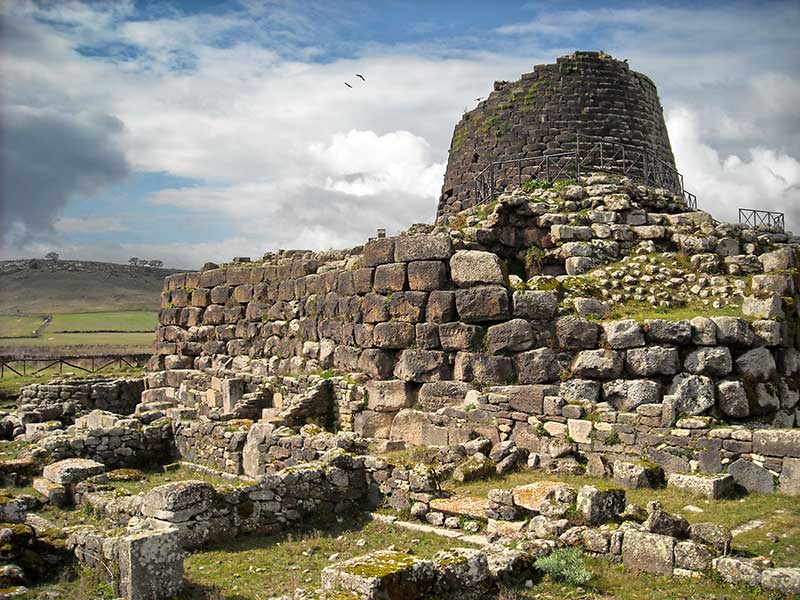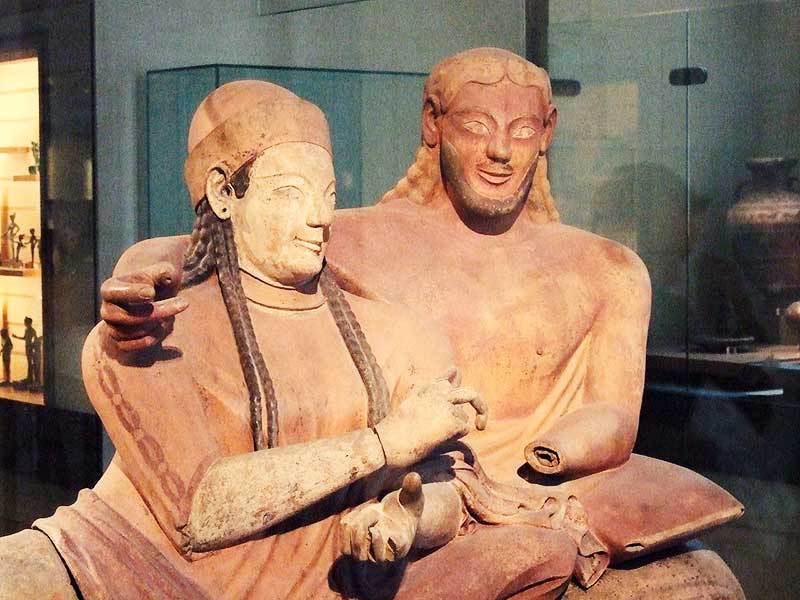Rome, caput mundi and glorious mother of western civilization, wasn’t the first power to rule over the peninsula. Naturally enough, a lot happened before that faithful April 21, 753 BC, the date selected by Latin historian Varro as the beginning of its motherland’s history. In terms of humankind history, in fact, the Roman civilization is relatively young, if you think that the majestic pyramids of Giza were built about 2000 years earlier and the Mycenaeans ruled over Greek lands around 1000 BC.
Yet, when it comes to Italy, it’s hard to severe the – rightful – cultural and historical bond with the ancient Romans and think about those who came and ruled before them. From the mysterious to the enlightened, from those who gave Italy her name to memories of Celtic magic, here are the names and deeds of those who were before Rome and gave to our beautiful country some of its essence and soul.

I Nuraghi Sardi sono parte del Patrimonio Mondiale dell’UNESCO dal 1997
Those we are called after: the Italics
In truth, the Italics were more than one people. Strictly speaking, they were all groups speaking Osco-Umbrian languages, of Indo-European origin. They lived along the Apennines, from Umbria to Calabria, and they were very much coeval with, to give you an idea, king Tut and his entourage. It is likely that all these people came from Asia around the year 1200 BC, finding their way into Italy through the Eastern Alps. As said, there were many of them, each with their own peculiarities: the Picenians and the Umbrian for instance, were known for their ability in working amber, the caramel colored, precious resin coming from the Orient, while the Sannites, the Sabines, the Lucans and the Messapians were able farmers and shepherds. Far from being peaceful, however, these people were also fierce fighters and strongly opposed all activities that could have mollified one’s character, in any way. In an ante-litteram example of what we would today call “tough love,” they liked their male children to grow up in the forest, so that they became acquainted with the hardships of nature and with hunting since the most tender of ages.

The Nuragic civilization of Sardinia is, still today, surrounded by mystery © Enzodebe | Dreamstime.com
Those surrounded by mystery: the Nuragic Civilization and the Etruscans
If you’ve ever been to Sardinia and had a chance to travel around a bit between a beach day and the other, you’re probably familiar with those peculiar and sturdy stone buildings (there are about 7000 disseminated all over the island) dotting the landscape here and there, which are so culturally and historically important that some of them – the Su Nuraxi in Barumini – have been part of the UNESCO World Heritage since 1997. Of the people who built them, we know very little: they ruled over Sardinia from 1800 BC, during the Bronze Age, until the moment the Romans conquered them, only a handful of years before the birth of Christ. We know they were excellent craftsmen, especially when it came to metal work, but that they were mostly farmers. Of course, we know they left us thousands of stone towers, majestic and mysterious, whose true scope is still largely unknown. Most archaeologists today believe Nuraghi had been conceived as military buildings or as markers delimiting the areas of dominion of the various clans constituting the Nuragic civilization. Mind, theories abound. Some think their disposition on the territory mirrors the stars in the sky and others, of course, believe they were built by aliens.

When it comes to Italy, it’s hard to severe the – rightful – cultural and historical bond with the ancient Romans and think about those who came and ruled before them
And even if I am not aware of it, I am sure there must be theories about the extraterrestrial origin of what remains the most mysterious and fascinating of all pre-Roman populations of Italy, the Etruscans.

Some of the people inhabiting Italy before the Romans had Celtic origins
The Etruscans are familiar faces for most of us, because we study them in school: their later history mingles with the early years of Rome and some of its early kings, the Tarquinians, were of Etruscan origins. We know them also for their profound respect for the dead and their cult, the vestiges of which fill southern Tuscany and northern Lazio. They were a refined, cultivated civilization, in striking contrast with the early inhabitants of Rome, feisty shepherds, little used to the delights of art. The Etruscans were an enigma for the ancient, too: as early as the 5th century BC, Herodotus wondered where they came from, settling on the idea they originated from the Anatolian peninsula. The mystery sort of remained throughout the centuries: for the longest time, historians agreed with their Greek ancestor, but a genetic study carried out in 2013 on ancient Etruscan bones demonstrated they were, in fact, from the Italian peninsula: Italiani DOC, insomma. The same study showed that, still today, Etruscan genes are present in a minority of Italians: they’re truly still among us.

The Eruscans, too, have a history still shrouded in mystery
Those who had Druids: the Celts
Say Celts and images of white bearded Druids gathering around cauldrons, chanting to Mother Earth come to mind, courtesy of decades of non-historical stereotypes and a tad of negative publicity given by some branches of New Age religions. But the Celts, the real ones, where a great people. What many may not be aware of is they were in Italy, too, more precisely in the areas today occupied by Piedmont and Liguria, but also in other regions of the North. They largely came from France, where we learnt to know them as Gauls, and they were great fighters. They initially settled in Liguria, in Veneto and all along the river Po, likely because of the fertile lands that surrounded it (Pianura Padana, anyone?). It was the 4th century BC, so Rome already existed then. However, modern historians believe there were much earlier migrations, dating back to the 16th century before the birth of Christ. They are likely to have improved local metallurgy and we known they introduced the habit of cremating the dead, which remained en vogue also during Roman times, at least until the advent of Christianity.
To say it all, the history of the people of Italy before the rise of Rome is almost as fascinating as that of the great republic and empire that eventually englobed them: simpler and less organized, perhaps – although it’s hard to say this about a people like the Etruscans – but fathers and mothers of whom we are today nevertheless; from the very language we speak, based on Latin but also influenced in its local inflections and sometimes vocabulary by their own way of speaking, to the ever important gift of representing a piece of our own national identity, these civilizations are the first Italians we know, the first to call our country home: knowing them better could be an incredible and wondrous experience.































